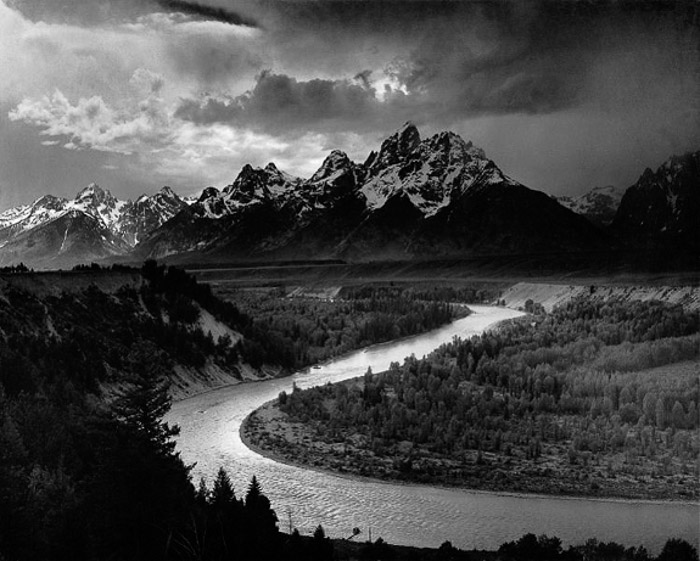Ansel Easton Adams was an American landscape photographer and environmentalist known for his black-and-white images of the American West. He helped found Group f/64, an association of photographers advocating “pure” photography which favored sharp focus and the use of the full tonal range of a photograph – Wikipedia
Ansel Adams – Landscapes

This is an incredible landscape shot taken by Ansel Adams of The Tetons and the Snake River (1942) Grand Teton National Park, Wyoming.
Ansel Adams uses the rule of thirds to create the perfect landscape shot. He framed the shot so that the top third of the image is the sky, and the lower third of the image is the land, creating balance in the image while bringing most of the attention of the viewer to the details on the ground in the midground.
The perspective of the image looks across the landscape, watching the river wind away from the camera, almost creating a vanishing point where the river appears to get smaller as it bets further away.
There is a large sense of depth in the image without using a wide aperture, Ansel Adams achieved this by using a small aperture and capturing a vast landscape. The focus of the image is the mid ground/background, the mountains. The size of the mountains compared to the flat river and woodlands in the foreground/mid ground creates a sense of depth and shows how far away the mountains are.
This sense of depth also giver the mountains and the image as a whole a sense of scale and how much Ansel Adams captured in one frame.
The lighting in this image is the diffused sunlight from the overcast sky. This creates even lighting throughout the image, with no harsh shadows or over exposed areas.
The image is in black and white which emphesises the tonal range. The contract within the image is high which gives dark shadows in the trees and the base of the mountains, but light highlights of the snow on the mountains and the light reflecting off of the river. This also adds to the depth of the image showing the scale of the dark shadows cast by the mountains.
